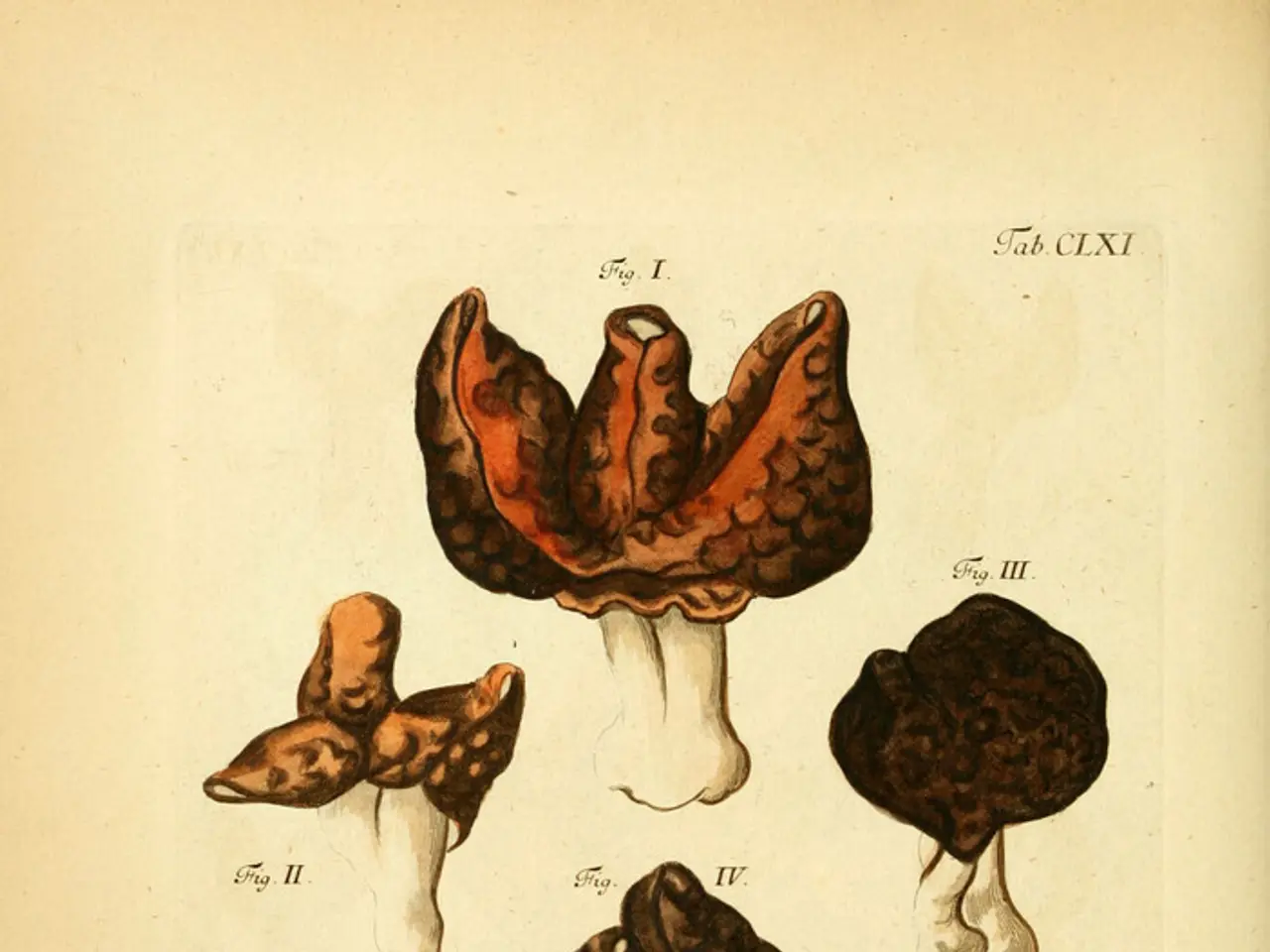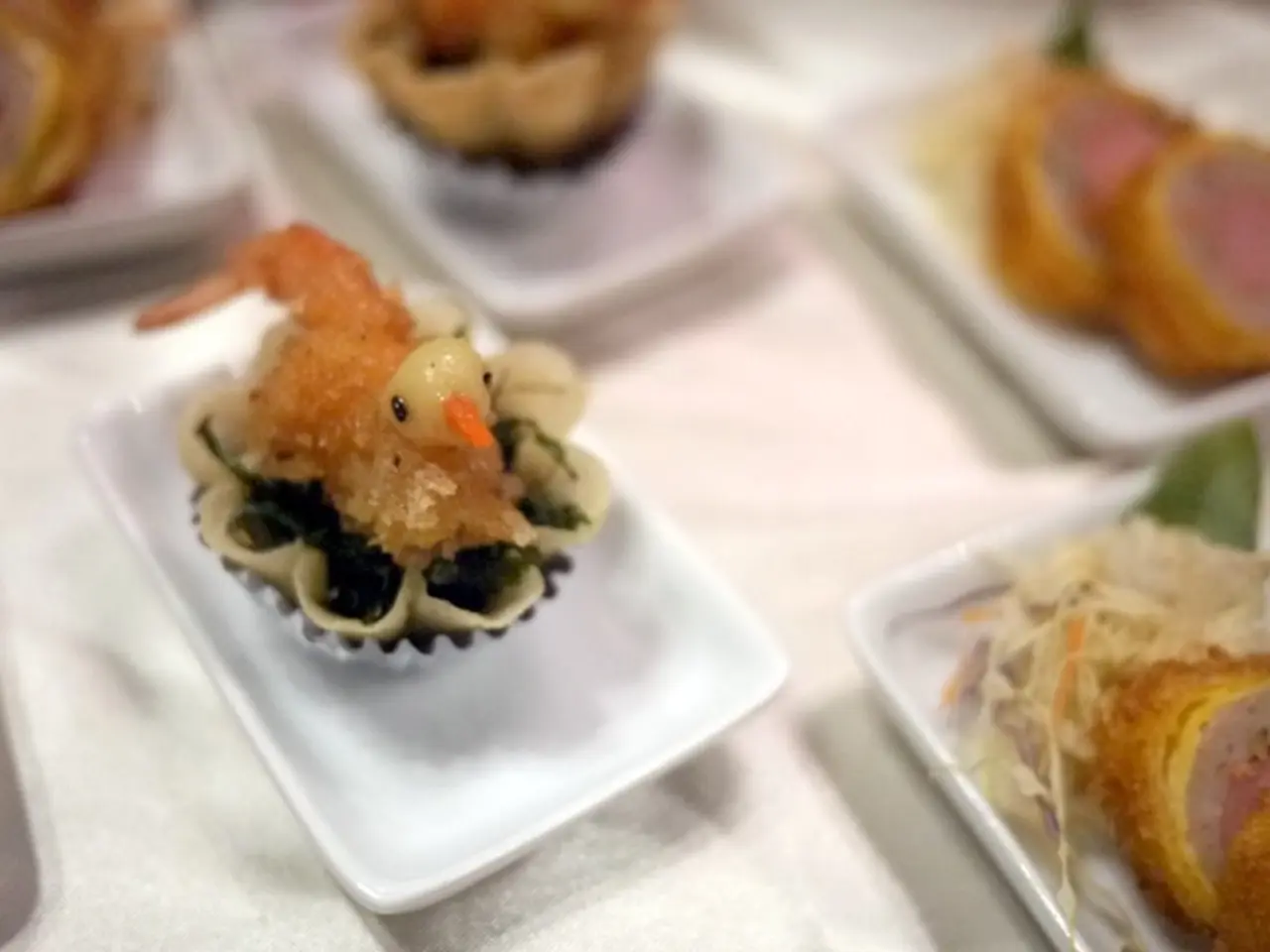Rain Causes Upsurge in Mushroom Growth and Potential Toxicity for Collectors
Mushroom Foraging in Germany: A Guide for Beginners
Mushroom hunting season is in full swing in Germany, with a variety of edible mushrooms available for enthusiasts. According to mushroom expert Wolfgang Bivour from Potsdam, a bounty of summer porcini, pine boletes, Pfifferlinge, various Agaricus species, giant puffballs, Hexenröhrlinge, and champignons can be found in the forests.
However, it's essential to approach mushroom foraging with caution, as there are poisonous species lurking among the edible ones. Dana Lafuente, director of the Brandenburg Mushroom School, assures that while many mushrooms are growing due to the rain, there will still be mushrooms available for the rest of the year.
When collecting mushrooms, it's crucial to use a ventilated basket, not a plastic box or bag, to prevent decomposition. Helbig warns against relying on mushroom identification apps, emphasizing that smell, taste, and consistency are important criteria for identification. A mushroom book is recommended for identification, while mushroom identification apps are advised against due to potential inaccuracies.
Bivour advises mushroom pickers to take advantage of the current harvest as a dry and hot August may reduce it. He also warns about common poisonous species like the panther mushroom and the green knobbed club, the latter of which can be deadly. If there's any doubt about a mushroom's safety, Lutz Helbig advises leaving it standing or wrapping it with its roots and bulb in newspaper for a mushroom consultation.
Common poisonous mushroom species in Germany include the Death Cap (Amanita phalloides), Leucocoprinus birnbaumii (flower pot parasol), Tricholoma equestre (golden cluster), Clitocybe acromelalga (poison funnel mushroom), and Inocybe asterospora (sweat mushroom).
The Death Cap is the most poisonous mushroom in Germany and is responsible for about 90% of fatal mushroom poisonings. Its symptoms vary from gastrointestinal distress to severe organ damage. The green knobbed club, on the other hand, cannot be broken down by the body, and consuming just one mushroom can lead to severe vomiting and diarrhea after 6 to 24 hours.
Beginners should initially focus on collecting boletes, as they are safe and easy to identify. Mushrooms should be young and the mushroom body should be firm. The main mushroom picking time is in the fall, but excellent mushrooms can also be found in the winter, in April with morels, and currently with the mushrooms that are available when the conditions are right.
According to the Brandenburg Forestry Act, each person may collect about one kilogram of mushrooms per day. It's important to remember that the mycelium, the actual mushroom, is always present unless its living conditions are destroyed. The fruiting bodies of mushrooms are their sexual organs and they are produced when the conditions are right, often after periods of rain.
For those interested in learning more about mushroom foraging, the Brandenburg Mushroom School offers classes and workshops. With the right knowledge and caution, mushroom foraging can be a rewarding and delicious hobby.
[1] Bödeker, G. (2016). Amanita phalloides: The Deadly Mushroom. Springer. [2] Hall, A. (2016). Mushrooms: Poisonous to People and Pets. Timber Press. [3] Helbig, L. (2016). Mushrooms of Germany: A Field Guide. Princeton University Press. [4] Klofac, J. (2016). The Complete Mushroom Hunter: A Practical Guide to Foraging Wild Mushrooms. Timber Press.
Science plays a significant role in health-and-wellness and lifestyle choices, such as mushroom foraging. For instance, understanding the edible and poisonous mushrooms found in forests can contribute to a healthier food-and-drink routine. According to mushroom experts like Wolfgang Bivour and Lutz Helbig, it's essential to approach mushroom foraging cautiously, using a ventilated basket to prevent decomposition and relying on a mushroom book for identification instead of apps due to potential inaccuracies.




